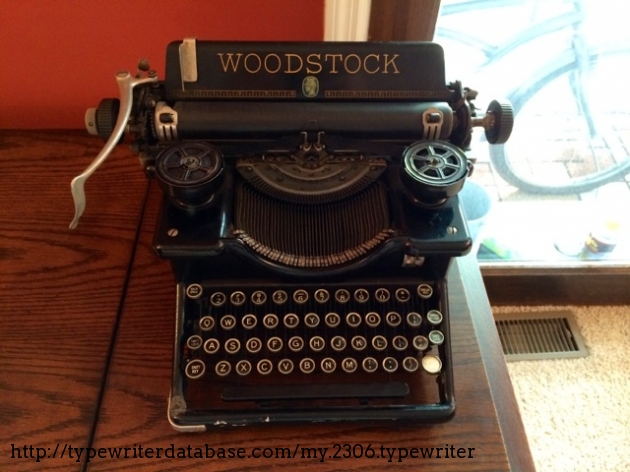고정 헤더 영역
상세 컨텐츠
본문
The Oliver No. 1 is arguably one of the most sought-after typewriters ever. This is due to its historical significance as well as its uniqueness in that it looks very different from its successors.
Royal Typewriter Serial Number Lookup

The Oliver 1 was manufactured in Dubuque, Iowa. All model 1 machines were nickel plated and have flat side handles and black keytops. The Oliver 1 does not have a removable carriage.Only around 500 machines were made, and I know of 10 currently in existance today. Unfortunately, I have yet to add an Oliver 1 to my collection. The Oliver No. 2 was the first Oliver model produced at the factory in Woodstock, Illinois.
Initally, the first few hundred Oliver No. 2s were nickel plated. The iconic olive green paint was introducted as an option and eventually became the standard finish. The white keytops were also introduced in the same manner.Many improvements were made during the production run of this model, all of which are listed in the table below.
Note that there is no Oliver model '1 1/2' or '1B'- the model 2 was continually revised and updated throughout its production run. Also note that the Oliver Typewriter Company jumped from serial number 500 to 5001 when starting production of the Oliver No. The Oliver No.
5 is the next traditional model after the Oliver No. (The Oliver No.
4 is not the next traditional model because starting with the model 4, the even-numbered machines were manufactured for international markets.) The model 5 is noticeably different from previous models in shape and design. Numerous improvements were introduced throughout this model's life span, all of which are listed in the table below.The Oliver No. 5 was the first model to offer a new typeface called Printype.
It was designed to mimic actual book print. Machines with this typeface option have 'The Printype Oliver - Pat. 5, 1912' displayed on their paper tables. With nearly half a million machines produced, the Oliver No. 9 is by far the most common Oliver model.
This model introduced shift keys on both sides of the keyboard.The key cover was changed (most likely at serial number 875001) to have a single open slot at the top instead of two smaller slots.Some Oliver No. 9 machines have the keys staggered differently. Traditionally, looking from left to right, the keys protrude from the top row, the bottow row, and then the middle row. The alternate keyboard staggers in order, from the top row, the middle row, and then the bottom row. Some of the symbols and other characters were also rearranged on the alternate keyboard. The machines with these alternate keyboards have an 'A' prefix on the serial number. The earliest example I have found is my machine, serial number A900380X.
After this machine, the only other examples I could find before serial number A980001 is A928771X and A975283X. Beginning with A980001, all model 9 machines were given the 'A' prefix and alternate keyboard.
Note that this excludes Oliver No. L-10 machines which have a Spanish keyboard with the traditional staggered layout and therefore do not have an 'A' prefix. The Oliver No. 11 was the last Oliver model produced for the domestic market. Compared to its predecessors, the Oliver No. 11 was given a different look.
The iconic olive green paint was discontinued in favor of gloss black accented with gold pinstriping. The Oliver logo was redesigned using a thin lettering.The side handles were replaced with side cutouts to lift the machine. Many sources say that only 35,000 model 11s were produced.


However, this is incorrect; 50,000 Oliver 11s were produced. I have seen Oliver No. 11 serial number 1049945 to help back this claim.Some model 11 (also 12, L-12, and L-13) serial numbers have a 'B' prefix. Unlike the 'A' prefix on Oliver No. 9 machines which denotes an alternate keyboard, the 'B' prefix has no correlation to the keyboard. Some machines with a 'B' prefix have the alternate keyboard and some do not.
I have yet to figure out what the 'B' prefix means.
I've been making a game effort today to catch up with emails. I noticed that one question which keeps cropping up concerns the problem of finding the serial number on old typewriters - particularly Smith Premiers.By chance, I came across this page from No 8, August 1989, which gives the location of numbers on early American typewriters. It came from Typewriter Topics of June 1912, almost 100 years ago, and was supplied by Ed Peters. (You will note the little-known Conover of 1912 is connected to the Chicago and the Munson; the Chicago was also marketed as the Baltimore, Draper 1900, Galesburg, Ohio and Yale 1906.)Most new collectors pretty quickly find their way to Dirk Schumann's to see when their machines were made, but it seems a few have difficulties finding the serial number to check against the dates on Dirk's database. So here is the page from ETCetera, I hope it helps.




